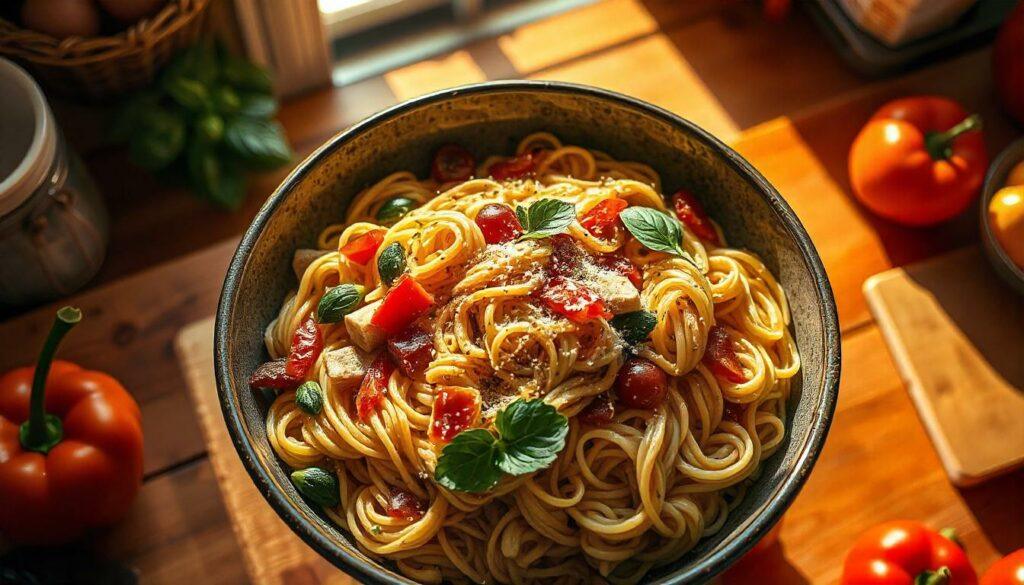Few foods evoke the essence of Italian cuisine like pasta. Rooted in centuries of history and culinary tradition, pasta is more than just a staple in Italy; it’s a cultural phenomenon that transcends borders. With its diverse shapes, sauces, and preparation methods, traditional Italian pasta showcases the country’s deep connection to its agricultural heritage, regional diversity, and culinary artistry.
This article explores the history, regional varieties, techniques, and cultural significance of traditional Italian pasta, celebrating its enduring role as a cornerstone of global cuisine.
A Brief History of Pasta
Pasta’s history is as rich as its flavors, weaving through ancient times and into modern culinary practices:
- Origins
While commonly associated with Italy, pasta’s origins are debated. Evidence suggests that early forms of pasta existed in ancient civilizations like the Greeks and Etruscans. These early flatbreads and doughs evolved into more recognizable pasta forms. - The Arab Influence
During the Middle Ages, Arab traders introduced dried pasta to Sicily. This innovation, which allowed pasta to be stored and transported, was a turning point that helped it become a pantry staple. - Renaissance and Beyond
By the Renaissance, pasta had become a beloved food throughout Italy. The development of durum wheat cultivation in southern Italy and pasta-making tools, like the rolling pin and pasta cutter, refined its production. By the 18th century, pasta was paired with tomato sauce, a now-iconic combination.
Key Features of Traditional Italian Pasta
Italian pasta is revered for its simplicity and versatility. Its defining characteristics include:
- Ingredients
Traditional pasta is made from just two main ingredients: semolina flour (from durum wheat) and water. In northern Italy, softer wheat and the addition of eggs are more common, producing pasta with a tender texture. - Handmade Craftsmanship
Many Italian families and artisans continue to make pasta by hand, using time-honored techniques to knead, roll, and cut the dough. Tools like wooden boards, rolling pins, and pasta machines enhance its texture. - Variety of Shapes
Italy boasts over 350 types of pasta, each tailored to specific sauces and dishes. From long, slender strands like spaghetti to intricate designs like farfalle, each shape tells a story of regional innovation and culinary need. - Cooking Method
Italians cook pasta “al dente,” meaning “to the tooth,” ensuring a firm texture that holds sauces beautifully.
Regional Varieties of Italian Pasta
Italy’s regions influence the types of pasta and the sauces that accompany them. Each region boasts unique flavors and culinary traditions:
- Northern Italy
- Tagliatelle and Pappardelle: Wide ribbons paired with hearty meat ragù.
- Tortellini and Ravioli: Filled pasta served in broth or with butter and sage.
- Sauces are often cream-based or incorporate butter and cheese, reflecting the area’s dairy production.
- Central Italy
- Bucatini: A hollow, spaghetti-like pasta often paired with Amatriciana sauce (tomato, guanciale, and Pecorino Romano).
- Linguine and Fettuccine: Frequently paired with earthy ingredients like mushrooms or truffles.
- Southern Italy
- Orecchiette: Ear-shaped pasta from Puglia, traditionally served with broccoli rabe and garlic.
- Spaghetti: Often paired with tomato-based sauces, seafood, or garlic and olive oil.
- The south’s sunny climate produces abundant durum wheat, ideal for dried pasta.
- Sicily and the Islands
- Pasta alla Norma: Spaghetti or penne with eggplant, ricotta salata, and tomato sauce.
- Influences from Arabic and Spanish cuisines are evident, featuring ingredients like saffron, raisins, and almonds.
Cultural Significance of Pasta in Italy
Pasta is not just a meal in Italy; it is a ritual and a shared experience:
- Family and Community
Pasta-making often involves families working together, passing down recipes and techniques through generations. Sunday lunches featuring handmade pasta are a cherished tradition in many Italian households. - Festive Occasions
Certain pasta dishes are associated with holidays and celebrations. For instance, lasagna is a popular dish for Carnival, while tortellini is a Christmas classic. - A Reflection of Regional Identity
Pasta shapes and sauces are deeply tied to regional pride. For Italians, the type of pasta served can signify a connection to their hometown or region.
Traditional Italian pasta is a celebration of simplicity, craftsmanship, and cultural heritage. Its enduring appeal lies in its versatility, with each region of Italy offering unique shapes, sauces, and stories. Whether handmade in an Italian kitchen or enjoyed at a Michelin-starred restaurant, pasta embodies the heart and soul of Italian cuisine.
By honoring its roots while embracing innovation, pasta continues to captivate palates around the world. It is more than a dish—it is an expression of love, tradition, and the universal joy of sharing a meal.






